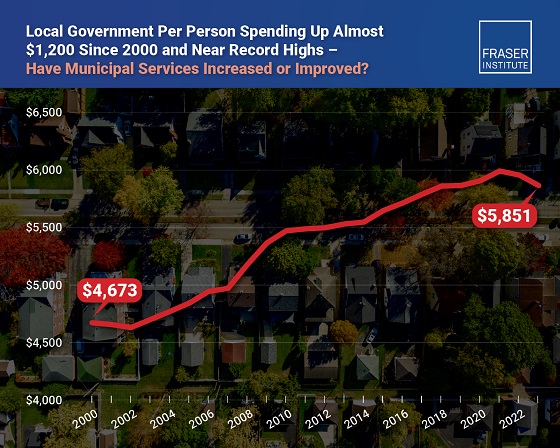Alberta
ECONOMIC RECONCILIATION IS A PRIORITY AT ENBRIDGE

ECONOMIC RECONCILIATION IS A PRIORITY AT ENBRIDGE

Building and maintaining relationships with Indigenous nations and groups over the lifecycle of our assets is essential to Enbridge’s continued success as a leading North American energy delivery company. An important part of how we do business is to work with Indigenous communities to help increase their capacity to participate economically in our projects and operations. Economic engagement ranges from providing training and employment opportunities that build transferrable skills, to the procurement of goods and services from Indigenous businesses. To tap into Indigenous communities’ growing capacity and desire to participate in contracting and employment opportunities, Enbridge has adopted a supply chain process that requires prospective contractors to include detailed Socio-Economic Plans that outline how they will include local Indigenous communities and businesses in their work for Enbridge’s projects and operations. This approach exemplifies our desire to build long-term relationships which create value for both Indigenous communities and our business.
Enbridge has long recognized that hiring Indigenous businesses supports local employment, gives us the opportunity to understand available services and talent, and helps build trust and relationships. We also appreciate the important contribution that Indigenous businesses make each year to the overall economy.
In 2019, we marked a major milestone, surpassing $1 billion in Indigenous spending since 2011 across our Liquids Pipelines and Gas Transmission businesses. This includes direct spend with Indigenous businesses as well as subcontracting opportunities for Indigenous businesses, suppliers and wages paid to Indigenous workers from our contractors.
Our Line 3 pipeline replacement project (L3RP) is an excellent example of how our supply chain is delivering on our commitment to maximize Indigenous participation. This supports our efforts to advance economic reconciliation in accordance with the Truth and Reconciliation Commission’s Call to Action #92.
At $5.3 billion for the Canadian segment alone, the L3RP was the largest capital project in Enbridge’s history. It also represented our largest and most successful community engagement effort – including more than 150 Indigenous communities from as far as 300 kilometres from the pipeline right of way.
As of late September 2019, Indigenous spending on the L3RP totaled approximately $440 million for contracting and wages, while more than 1,100 Indigenous men and women were employed on project construction, representing approximately 20% of the overall workforce.

Indigenous monitors provided environmental and cultural perspective to the project construction team.
“The economic benefits flowing to Indigenous communities from Line 3 pipeline construction are no accident or happy coincidence,” says Enbridge’s Dave Lawson, Vice President of Major Projects. “Rather, they are the direct result of our comprehensive and proactive engagement program and the joint commitments between Enbridge and numerous Indigenous communities and groups.”
The leaders of several First Nations located along the Line 3 route note that “this economic stimulus benefited more than just the workers, it benefited the families and the Nations we represent.” They worked with Enbridge and “found ways to ensure environmental protections, and ways to secure tangible economic benefits and career development commitments for the indigenous people we represent. Enbridge listened and we believe this project has been a success for our people.”
Another community benefitting from the L3RP was the Manitoba Metis Federation (MMF). David Chartrand, President of the MMF says, “In order to work on a pipeline you have to have certification, so we got our people all ready and trained a year before the pipeline went in. We were ahead of the game.”
“I can honestly say,” he adds, “that this is one of the true success stories that we can probably talk about. Enbridge has got a blueprint for other companies if they want to use it.”
This focus on engagement and inclusion led to 58 cooperative project agreements with Enbridge, representing the participation of 95 Indigenous communities or groups.
“From the outset, we made a concerted effort to ensure Indigenous communities understood our project, specifically how they might participate and benefit economically,” explains Kim Brenneis, Director of Community and Indigenous Engagement. “I think the positive results we’ve seen speak to Enbridge’s strong commitment to inclusion as well as to building mutually-beneficial relationships with Indigenous nations.”
Beyond successful engagement, there are three major reasons for the strong Indigenous project participation and spending profile, explains Barry Horon, Director of Supply Chain Management for Projects.
“First, we worked with Indigenous communities to help create the capacity needed to participate in meaningful pipeline contracting and employment opportunities; second, Enbridge adopted a proactive supply chain process that, among other initiatives, required prospective contractors to include detailed Indigenous participation plans in their bids; and third, we implemented a labour strategy to enhance connections between Indigenous job seekers and our primary construction contractors through an online portal and the use of Indigenous labour brokers,” says Horon.

Indigenous men and women, such as Kara Pooyak of Sweetgrass First Nation, made up 20% of the Line 3 construction workforce.
Included in the Indigenous workforce were 27 construction monitor and nine liaison positions that provided both Indigenous perspectives and advice to the Line 3 project team. This helped to ensure that Enbridge’s environmental mitigation strategies – which were approved by the National Energy Board – were implemented during construction.
Another key component of the labour strategy was the now-completed Line 3 Pipeline 101 training-to-employment program. Over three years, more than 260 Indigenous men and women graduated from the program, many of whom have secured work on the L3RP.

Justin McKinney of Swan Lake First Nation is building a career in pipelining, thanks to training and mentorship he received during the Line 3 project.
Our experience with the L3RP led to an assessment of how Enbridge’s Indigenous engagement practices had evolved over the past few years. An outcome of this process was the introduction, in 2019, of our Indigenous Lifecycle Engagement Framework, which now guides our approach to building and sustaining long-term relationships across our business going forward, including for enhancing Indigenous economic participation in our projects and operation.
The framework was shared with several Indigenous nations in Canada. We are now incorporating their feedback into our planning and we will continue to seek to seek their input to ensure that our approach remains in step with their interests and goals.
Thanks to Todayville for helping us bring our members’ stories of collaboration and innovation to the public.
Click to read a foreward from JP Gladu, Chief Development and Relations Officer, Steel River Group; Former President and CEO, Canadian Council for Aboriginal Business.

JP Gladu, Chief Development and Relations Officer, Steel River Group; Former President & CEO, Canadian Council for Aboriginal Business
Click to read comments about this series from Jacob Irving, President of the Energy Council of Canada.

Jacob Irving, President of Energy Council of Canada
The Canadian Energy Compendium is an annual initiative by the Energy Council of Canada to provide an opportunity for cross-sectoral collaboration and discussion on current topics in Canada’s energy sector. The 2020 Canadian Energy Compendium: Innovations in Energy Efficiency is due to be released November 2020.
Click below to read more stories from Energy Council of Canada’s Compendium series.
PETER SUTHERLAND SR GENERATING STATION POWERS NORTHEAST ONTARIO
Alberta
Alberta Provincial Police – New chief of Independent Agency Police Service

Sat Parhar has been appointed as the first chief of the Independent Agency Police Service, marking the next step toward a new municipal policing option.
The appointment of a new chief for the Independent Agency Police Service (IAPS) marks the next step in giving municipalities a new option for local policing and builds on the work already underway for the agency to assume the police-like duties currently carried out by the Alberta Sheriffs. The IAPS will empower municipalities to adopt strategies that effectively respond to their specific safety concerns, enhancing public safety across the province.
Chief Parhar brings more than 25 years of policing experience, including senior roles with the Calgary Police Service, most recently as deputy chief. His frontline policing experience and deep understanding of Alberta’s complex and diverse public safety landscape positions him to lead the agency as it takes shape and begins its work as a new municipal policing option, keeping communities safe.
Once operational, the agency will strengthen Alberta’s existing policing model and complement the province’s current police services, which includes the RCMP, Indigenous policing services and municipal police. It will help fill gaps and ensure law enforcement resources are deployed efficiently to meet Alberta’s evolving public safety needs and improve law enforcement response times, particularly in rural communities.
“Appointing Chief Sat Parhar is a key milestone in Alberta’s plan to give municipalities a real choice in how their communities are kept safe. This is about building a modern police service that reflects the priorities of Albertans, strengthens local decision-making, and ensures every corner of our province, especially rural areas, can count on responsive, effective law enforcement. With his decades of experience and deep understanding of Alberta’s policing landscape, he is the right leader to bring this vision to life.”
“This appointment signifies a significant step forward in our efforts to establish a more robust, community-focused policing model that is better equipped to meet the unique needs of our local residents. Under Chief Parhar’s visionary leadership, we are confident that we will develop a modern, efficient police service that not only enhances public safety but also aligns closely with the priorities and values of Albertans. His experience and commitment are vital in shaping an IAPS that is responsive, transparent, and dedicated to fostering trust and collaboration within the community, ultimately ensuring a safer and more connected society for all.”
Chief Parhar’s immediate priorities will be to hire an executive team and commence organizational planning such as developing key recruitment, training and other operational policies. Chief Parhar’s appointment is the first step of many to establishing the IAPS.
“It’s an honour to take on this role and help shape a modern police service built for Alberta. My focus from day one will be on setting high standards for professionalism, building strong relationships with our partners and ensuring this service reflects the needs and priorities of the communities we serve.”
The Independent Agency Police Service was formally created through regulation following the passing of Public Safety Statutes Amendment Act, 2024. The agency will operate as an independent Crown corporation, and will be renamed the Alberta Sheriffs Police Service, with its head office located in Calgary. The IAPS will be operationally independent from the provincial government with civilian oversight, consistent with all police services in Alberta.
“When it comes to policing, municipalities like ours deserve a choice – especially when the current system leaves us disadvantaged simply because of our size. We look forward to learning more about what that alternative will look like once an Alberta police agency is fully established and the options are clear. For us, this is about fairness, sustainability, and ensuring municipalities have access to policing solutions that reflect both their needs and their realities.”
Quick facts
- The regulation establishes the IAPS Provincial Corporation and its governance structure including board of directors, board of director powers, financial responsibilities and accountabilities.
Related news
- Expanding municipal police service options (April 7, 2024)
Alberta
Pierre Poilievre – Per Capita, Hardisty, Alberta Is the Most Important Little Town In Canada

From Pierre Poilievre
-

 Business2 days ago
Business2 days agoOttawa Funded the China Ferry Deal—Then Pretended to Oppose It
-

 COVID-192 days ago
COVID-192 days agoNew Peer-Reviewed Study Affirms COVID Vaccines Reduce Fertility
-

 MAiD2 days ago
MAiD2 days agoCanada’s euthanasia regime is not health care, but a death machine for the unwanted
-

 Business1 day ago
Business1 day agoWorld Economic Forum Aims to Repair Relations with Schwab
-

 Alberta2 days ago
Alberta2 days agoThe permanent CO2 storage site at the end of the Alberta Carbon Trunk Line is just getting started
-

 Alberta2 days ago
Alberta2 days agoAlberta’s government is investing $5 million to help launch the world’s first direct air capture centre at Innisfail
-

 Business2 days ago
Business2 days agoMunicipal government per-person spending in Canada hit near record levels
-

 Business1 day ago
Business1 day agoA new federal bureaucracy will not deliver the affordable housing Canadians need




